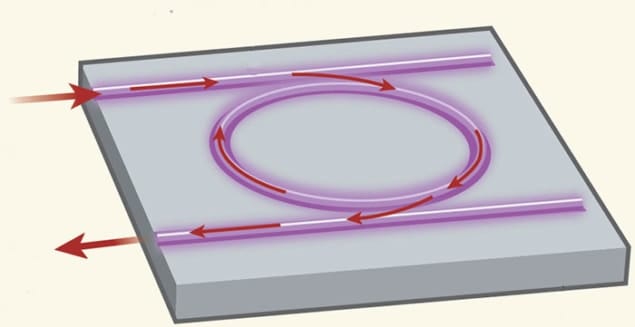
A simple way of encoding a large amount of information in a single photon has been unveiled by an international team of physicists led by Michael Kues and Christian Reimer of INRS-EMT in Montreal, Canada.
The technique involves firing a laser pulse into a tiny ring that traps light at a set of equally spaced frequencies called a frequency comb. This microring resonator is made from a material with nonlinear optical properties, which allows two photons of the laser light to combine to create two photons with frequencies that are distributed across the frequency comb.
Loss tolerant
In this experiment, each photon is produced with 10 possible frequencies. Just as the polarization state of a photon allows it to carry a bit of quantum information that can be zero or one, these photons can be encoded in terms of their frequencies to carry much larger amounts of quantum information. This could be very beneficial because quantum information is lost when photons are absorbed randomly in components such as optical fibres. If fewer photons are required to transmit larger amounts of information, then losses would be less significant.
The microring resonator can be integrated within an optical chip and the team was able to manipulate the encoded photons using off-the-shelf components used in optical-communications networks. Another benefit of the scheme is that the pairs of photons are produced in an entangled state, which makes them useful for a wide range of quantum-information applications. The research is described in Nature.



